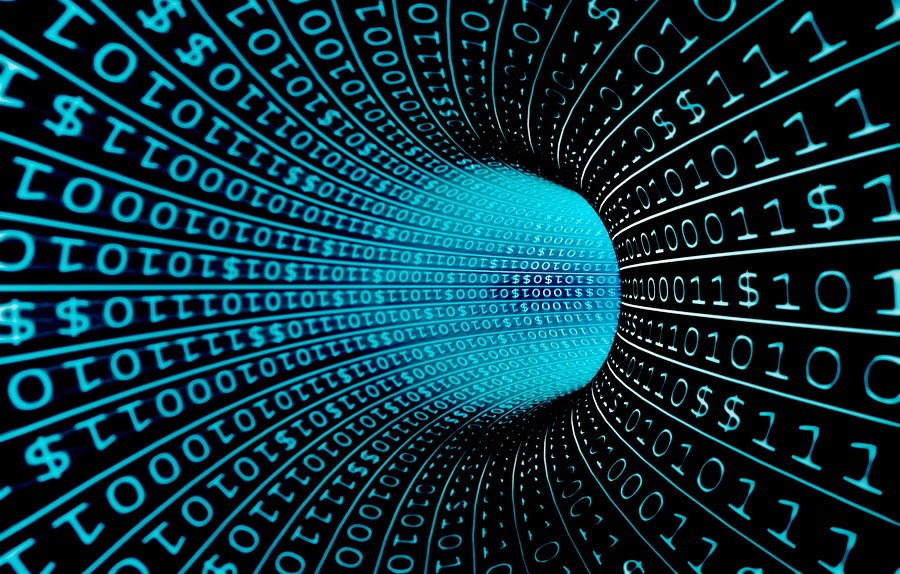A Simple Explanation about Binary Numbers
As an example of a decimal number, for the number 157:
157 (10) = (1 x 100) + (5 x 10) + (7 x 1)
Pay attention! this decimal number is often also called base 10. This is because the 10th gained from 100, 101, 102, etc.
Know the Concept of Binary and Decimal Numbers
The fundamental difference between the binary and decimal methods is with respect to the base. If a decimal based on 10 (X10) is 10x, then for a binary number based on 2 (X2) using 2x forces. Simply note the example below!
For Decimal:
14 (10) = (1 x 101) + (4 x 100)
= 10 + 4
= 14
For Binary:
1110 (2) = (1 x 23) + (1 x 22) + (1 x 21) + (0 x 20)
= 8 + 4 + 2 + 0
= 14
The general forms of binary and decimal numbers are:
Binary 1 1 1 1 1 1 1 1 11111111
Decimal 128 64 32 16 8 4 2 1 255
Power 27 26 25 24 23 22 21 20 X1-7
Now we go back to the example above! Where do we get the decimal number 14 (10) into binary number 1110 (2)?
Let's look again at the general form!
Binary 0 0 0 0 1 1 1 0 00001110
Decimal 0 0 0 0 8 4 2 0 14
Power 27 26 25 24 23 22 21 20 X1-7
Let's explore slowly!
• First of all, we add the number to the decimal so that it becomes 14. You see the numbers that produce the numbers 14 are 8, 4, and 2!
• For numbers that make up the number 14 (see shaded numbers), marked with binary "1", the rest are marked "0".
• So that when reading from the right, the decimal number 14 will be 00001110 (sometimes read 1110) in its binary number.
Change the Binary Number to Decimal
Consider the example!
- 11001101 (2)
Binary 1 1 0 0 1 1 0 1 11001101
Decimal 128 64 0 0 8 4 0 1 205
Power 27 26 25 24 23 22 21 20 X1-7
Note:
• The decimal number 205 is derived from the sum of the digits (128 + 64 + 8 + 4 + 1)
• Any binary marked "1" will be counted, while binaries marked "0" are not counted, aka "0" as well.
- 00111100 (2)
Binary 0 0 1 1 1 1 0 0 00111100
0 0 0 32 16 8 4 0 0 60
Power 27 26 25 24 23 22 21 20 X1-7
Converts Decimal to Binary
To convert a decimal number into a binary number is used the division method with the number 2 while paying attention to the rest.
Consider the example!
- 205 (10)
205: 2 = 102 remaining 1
102: 2 = 51 remaining 0
51: 2 = 25 remaining 1
25: 2 = 12 remaining 1
12: 2 = 6 remaining 0
6: 2 = 3 remaining 0
3: 2 = 1 remaining 1
1 as the last remaining "1"
Note:
To write the binary notation, the reading is done from below which means 11001101 (2)
- 60 (10)
60: 2 = 30 remaining 0
30: 2 = 15 remaining 0
15: 2 = 7 remaining 1
7: 2 = 3 remaining 1
3: 2 = 1 remaining 1
1 as the last remaining "1"
Note:
Read from bottom to 111100 (2) or typically written with 00111100 (2). Remember the general shape refers to 8 digits! If 111100 (this 6 digits) to 00111100 (this is 8 digits).
Binary Arithmetic
This section will discuss binary addition and subtraction. Binary multiplication is a repetition of the sum; and will also discuss binary reductions based on ideas or ideas of complement.
Binary Sum
the Binary summation is not so much different from the sum of decimals. Consider the example of decimal sums between 167 and 235!
1 7 + 5 = 12, write "2" below and lift "1" up!
167
235
---- +
402
Like decimal numbers, binary numbers are also summed up in the same way. The first thing to look out for is the following binary digit pair rule:
0 + 0 = 0
0 + 1 = 1
1 + 1 = 0 and save 1
as a note that the last two numbers are:
1 + 1 + 1 = 1 by storing 1
By simply using the sums above, we can perform a binary sum as shown below:
1 1111 "stash 1" recall the above rule!
01011011 binary number for 91
01001110 binary number for 78
------------ +
10101001 Amount of 91 + 78 = 169
Please review the binary digit pairing rules mentioned above!
An example of a binary sum that consists of 5 numbers!
11101 number 1)
10110 number 2)
1100 number 3)
11011 number 4)
1001 number 5)
-------- +
to sum it up, we calculate it based on the prevailing rules, and for simpler calculations done gradually!
11101 number 1)
10110 number 2)
------- +
110011
1100 number 3)
------- +
111111
11011 number 4)
------- +
011010
1001 number 5)
------- +
1100011 End Count.
now try to determine what are the numbers 1,2,3,4 and 5! Is the above calculation correct?
Binary Reduction
Decreasing the decimal number 73426 - 9185 will result in:
73426 look! The numbers 7 and 4 are reduced by 1
9185 decimal digits of a decimal.
64241 The final reduction results.
General form of reduction:
0 - 0 = 0
1 - 0 = 0
1 - 1 = 0
0 - 1 = 1 by borrowing '1' from the digits on the left!
For binary reduction can be diol
